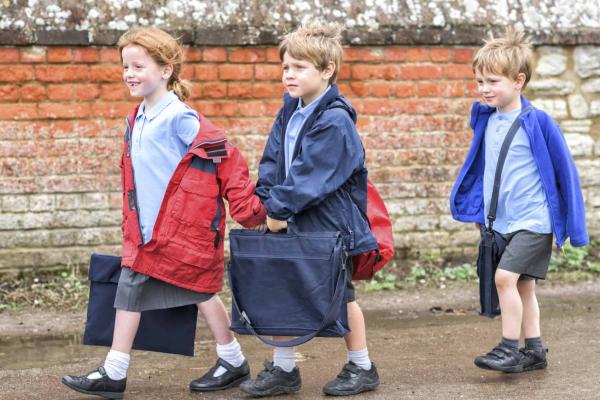
Researchers have found the most dangerous time for your child.
And, contrary to popular belief, it's not at night. It's actually in the morning, specifically at school drop-off time.
This comes from a study done by York University and the Hospital for Sick Children in Canada, which found that children are at risk when they're getting dropped off at school, mostly because rushing parents don't take extra consideration during their drop-offs, according to an article in the Hamilton Spectator.
For instance, children's lives are in danger when they cross busy streets while parent drivers are blocking designated crosswalks.
Danger also lurks when parents don't "stop or put their cars in park" to let children cross the street, according to the article by Kristin Rushowy.
"It's a bit tough because we are not trying to put the blame on everybody, but people don't stop to think about what the consequences of what they are doing will be - 'it's my child, I'm just stopping for a minute, I'm just double parking for a minute,' " York University health professor Alison Macpherson told the Spectator.
Researchers compared injury rates, car collisions and parents' driving habits. They found that 411 schoolchildren over a period of 12 years were hit by a car within 200 meters (about 650 feet) of their school. Forty-five of those collisions were during peak times, with 29 of those rushed to the hospital, Rushowy reported. These sort of accidents are the fifth leading cause of injury for people 5 to 19, according to Safe Kids Worldwide.
Their findings are similar to what many school officials have observed: parents will do U-turns in front of schools, which can block other children from leaving right away. In other cases, children may decide to jaywalk and step out into busy traffic.
"We are busy, we are stressed, especially in the morning - people have to get to work and I understand that, I'm a working parent, too," Macpherson told the Spectator. "But we have to do whatever we can to make roads safer for everybody."
Children's safety is one of the biggest issues for American families today, with 19 percent of families saying it was one of their most important problems, just behind religious attendance and sexual permissiveness, according to the American Family Survey.
More importantly, though, about 53 percent of parents are concerned with other parents not teaching or disciplining their children sufficiently, the survey found. This plays into the potential issues with road safety, especially if parents aren't teaching children enough about staying safe while walking to or around school.
Education leaders and teachers have worked for many years to keep children safe from drivers. Children are often impulsive and may want to rush out onto the street without thinking twice. They also have limited attention spans and side vision, both of which put them at risk for making unsafe decisions near roads, according to the University of Minnesota Masonic Children's Hospital.
"Young children don't yet have the skills needed to cross a street safely. This is especially true of kids under 10 years old," according to the hospital's website.
Parents can start teaching their children simple "dos and don'ts" about staying safe outside of school by telling them to recognize and obey traffic signs, walk on the sidewalk wherever possible and double-check both sides of the road before crossing the street.
Parents may also want to tell their children not to cross the road between a pair of parked cars and not to run or play in the street, especially in high-traffic areas like a school parking lot, the hospital's site said.
"Teach your child to make safety decisions," the hospital suggested. "As your child gets older, help him or her develop safety judgment. For instance, while crossing the street, explain why you think it's safe to cross at a particular time. Ask if your child agrees."
For more tips, the National Highway Traffic Safety Administration offers a child pedestrian safety curriculum for all grade levels, which teaches children about how to cross the streets, walk near traffic or stay safe in parking lots. These training guides are good for families who want to teach their children about being safe outside of school.

